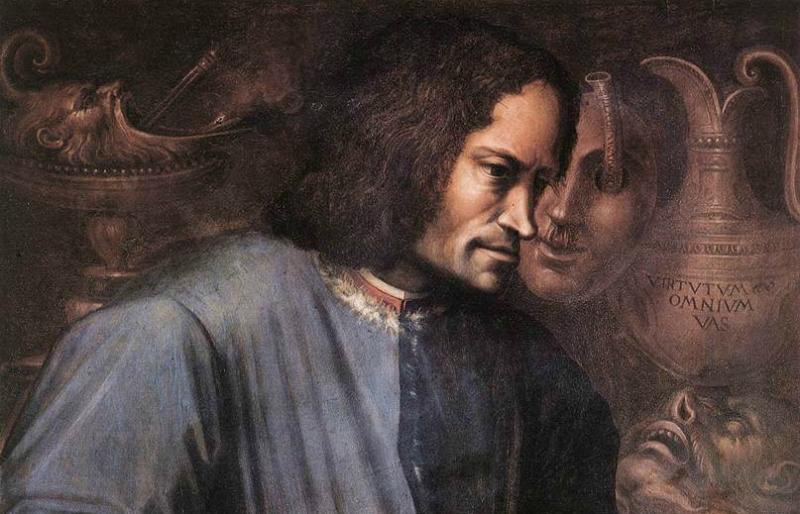Lorenzo The Magnificent
ITA:

A skillful politician and keen patron of the arts, Lorenzo de’ Medici (1449-92), known as “The Magnificent”, belonged to the powerful Florentine family of the Medici, who ruled Florence and Tuscany from the 15th to the 18th centuries. Four members of the dynasty became popes, others married into the royal families of Europe, and some, through their patronage of the arts, had a profound influence on Italian intellectual life.
Like his grandfather Cosimo de’ Medici, Lorenzo combined two roles: running the Medici Bank and leading the Florentine Republic. Like his grandfather, he was one of the wealthiest men in Europe and spent large amounts of money in his role as a philanthropist, art collector and patron.
An artist himself (he loved to write poetry), Lorenzo was one of the most powerful and enthusiastic patrons of the Renaissance, and had the knack of sponsoring genius: among the artists who worked for him were Leonardo da Vinci, Sandro Botticelli and Michelangelo. Michelangelo lived with Lorenzo and his family for five years, dining at the family table and participating in discussions led by humanist philosopher Marsilio Ficino.
Lorenzo was also a clever politician: his diplomatic efforts helped keep other European states out of Italy. Aside from personal interest, Lorenzo also used the Florentine scene of fine arts for his diplomatic moves, such as when he sent Ghirlandaio, Botticelli and Pietro Perugino to Rome to paint murals in the Sistine Chapel, a move that has been interpreted as sealing the alliance between Lorenzo and Pope Sixtus IV. When Lorenzo died, the fragile peace that he helped maintain among the various Italian states collapsed.
He is buried in the Medici Chapel inside the Basilica of San Lorenzo in Florence.
Abile politico e mecenate appassionato, Lorenzo de' Medici (1449-1492), noto come “Il Magnifico”, appartenne alla potente famiglia fiorentina dei Medici, che governò Firenze e la Toscana dal 15° al 18° secolo. Quattro membri della dinastia divennero Papi, altri si sposarono con membri delle famiglie reali d'Europa, e alcuni, attraverso il loro patrocinio delle arti, ebbero una profonda influenza sulla vita intellettuale italiana.
Come suo nonno Cosimo de' Medici, Lorenzo ricopriva due ruoli: dirigeva la Banca dei Medici ed era a capo della Repubblica Fiorentina. Come suo nonno, era uno degli uomini più ricchi d'Europa e spese grosse somme di denaro nel ruolo di filantropo, collezionista d'arte e mecenate.
Egli stesso un artista (amava scrivere poesie), Lorenzo fu uno dei più potenti ed entusiasti mecenati del Rinascimento, e possedeva l'abilità di riconoscere un genio: tra gli artisti che lavorarono per lui ci furono Leonardo da Vinci, Sandro Botticelli e Michelangelo. Michelangelo visse con Lorenzo e la sua famiglia per cinque anni, cenando con loro e partecipando alle discussioni guidate dal filosofo umanista Marsilio Ficino.
Lorenzo fu anche un politico intelligente: i suoi sforzi diplomatici contribuirono a mantenere gli stati europei fuori dall'Italia. Oltre che per interesse personale, Lorenzo seppe sfruttare la ricchezza artistica fiorentina per le sue mosse diplomatiche; ad esempio, l’invio degli artisti Ghirlandaio, Botticelli e Pietro Perugino a Roma per dipingere parte della Cappella Sistina è stato interpretato come un modo per sigillare l'alleanza tra Lorenzo e Papa Sisto IV. Quando Lorenzo morì, la fragile pace che egli contribuì a mantenere tra i vari stati italiani crollò.
Lorenzo de’ Medici è sepolto nella Cappella Medicea all'interno della Basilica di San Lorenzo a Firenze.











